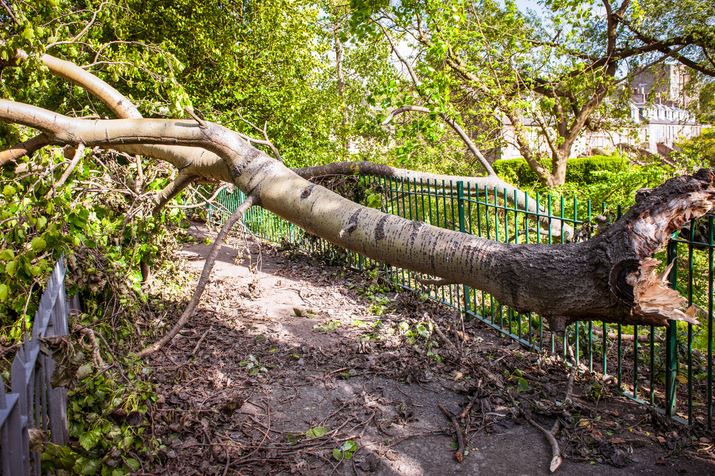
Over the last four years from 2018 to 2022, we've received 198 liability claims for storm, flooding and water damage – 50% of these claims occurred in the winter months of June to August. Of note is that winter storm, flooding and water damage claims are more significant, with the top three largest claims all occurring in winter.
In winter we also see a step up in road surfaces and pot hole claims. From 2018 to 2022 we've received 556 of this type of claim, with 44% received in the winter months.
Tree branch, tree failure and root claims continue to be significant with winter claims accounting for 24% of the four year total. Tree failure in particular spikes in winter accounting for 32.5% of claims within this category.
With winter approaching it's important that LGIS members prepare for potential stormy weather.
Storms can be unpredictable and vary in intensity across the state. Damaging winds, rain, lightning, hail and flash floods can cause a significant amount of damage to property, vehicles and the environment. In the last four years we have paid over $4M in flood and water damage claims.
It is important to take the following steps in preparation for storm season:
- Ensure street drainage systems are maintained and cleared of debris
- Respond to notification and identification of potholes in roads
- Identify and maintain loose and broken roof materials
- Respond to fallen trees and branches
- Maintain and inspect for blocked gutters and downpipes
- Maintain overhanging trees near power lines
Preparation is not only about ensuring your local government's property is ready, but also about ensuring internal procedures and systems respond in a planned and rehearsed manner, if required. This includes emergency management plans (i.e. evacuation, emergency supplies and contact details) and business continuity arrangements in the event of building damage, power loss or IT system interruption.
In addition, you are reminded to be vigilant of the potential fire risks within the workplace during the winter months. These include but are not limited to heating systems, fireplaces, candles, matches and lighters which will have increased usage during the cold weather. A fire can engulf an entire room within four minutes with severe consequences, so constant awareness and preparation all year round is recommended.
For more information and tips to prepare for storms and fires, follow the links to the Department of Fire and Emergency Services (DFES) WA materials.